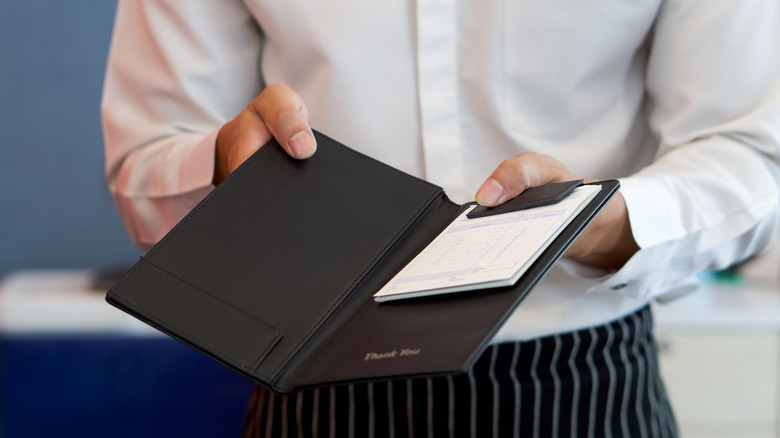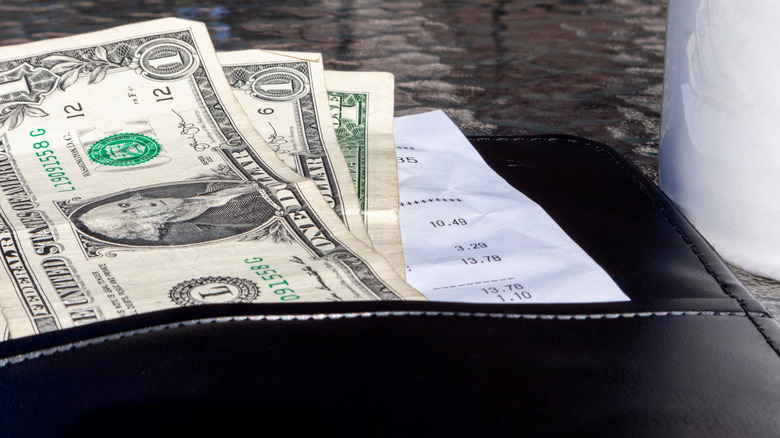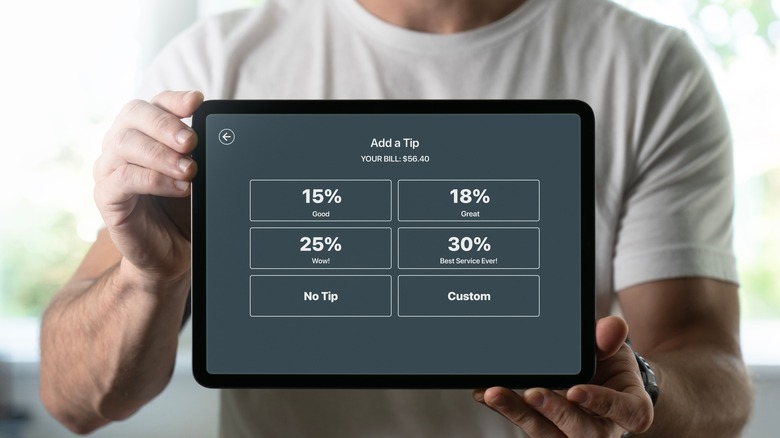How To Politely Ask For Change At A Restaurant
The practice of tipping has never been straightforward or static, and has become increasingly perplexing in recent years. When it's time to pay the bill at a full-service restaurant, you might find you only have a $50 bill for an $18 meal. Naturally, you would expect change in this situation. However, requesting it might feel awkward, or might unintentionally pressure you to tip more than you intended. But don't worry; there's a polite way to ask for your change.
It's important to understand that some restaurants require servers to carry a "bank" — $20 to $30 of their own money to make change for customers. This practice allows busy staff to quickly close the bill and ready the table for new guests, settling their finances with the restaurant afterward. Thus, waiters are prepared for such scenarios. If you don't have exact change, you can simplify the process by politely specifying the amount of change you need. For instance, if your bill is $20.50 and you only have $20 bills, you could give the server $40 and ask for $15 back — the server will gladly oblige.
If the service was exceptional and you're inclined to leave the extra as a tip, you could proactively inform your server that no change is necessary. However, to avoid future awkwardness and maintain control over your tipping, consider bringing various smaller bills when paying in cash at a restaurant.
A little preparation goes a long way
For many merchants, cash is the preferred payment method, as they face an average of 1.5% to 3.5% in processing fees each time a card is used, potentially diminishing profits. However, for customers, paying with a credit card eliminates the potentially awkward question, "Can I get change?" Therefore, exploring alternative payment methods is a viable option.
If you choose to pay with cash, here's a strategy to empower you and prevent uncomfortable tipping scenarios. Being prepared and predicting your needs is crucial; carrying smaller bills when dining out can be a game-changer. Having an assortment of singles, fives, and tens allows you to leave a precise tip without any fuss.
This approach might be more complicated with a larger group, where multiple people requiring change can create awkwardness. In such situations, you could act as the "bank" for your less prepared companions, making change directly at the table. If you frequently eat out with others, here are some etiquette rules to keep in mind when dining with bad tippers, to ensure you're not mistakenly under-tipping your servers.
Determining an appropriate tip
For most servers, tips are a crucial part of their income. Moreover, the restaurant's tipping policy might mean servers don't retain all of their tips; in some establishments, tips are pooled and distributed evenly among the staff.
In the United States, the customary tip is 15 to 20% of the bill, excluding tax, unless the restaurant enforces a no-tipping policy. When determining the appropriate tip amount, consider your party's size, the service level, and your meal's total cost. For exemplary service, leaving a higher gratuity is a suitable way to show appreciation. Note that some restaurants automatically add a service charge or gratuity for groups of six or more. Always review your bill, and consult with your server if you're uncertain. Then, when you're done with your meal, demonstrate great dining etiquette by leaving shortly after paying the check.
While tipping is at the diner's discretion, it's important to assess the reasons for a less-than-ideal experience before reducing the tip. If the restaurant is understaffed, if there was an issue with your order in the kitchen, or if other patrons are disruptive, these are not the server's fault. Remember, they might be exerting extra effort to provide the best service possible under challenging circumstances.



